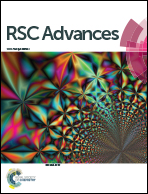Insight into metallic behavior in epitaxial half-metallic NiCo2O4 films
Abstract
Understanding the cation distribution and electronic transport properties of half-metallic NiCo2O4 (NCO) films is crucial to advancing their practical applications in optoelectronic materials. In this work, the specific range of growth temperature (TG) and oxygen pressure (Op) for the metallic NCO film is obtained. The concentration of Ni3+ and NiTet ↔ CoOct exchange interactions are the primary determinants of metallic behavior in NCO thin films, which is demonstrated by the experimental and computational results. Theoretical simulation shows that the electron–electron and electron–magnon scattering intrinsically determined the metallic behavior. The growth temperature has a great influence on the structure and lattice constant of the NCO film. The film with metallic behavior has a relatively small lattice constant, which results in a large saturation magnetization. Due to the disordered cation in the metallic film, two magnetic phases were observed. The formation of the low-valence oxides at low Op and the cation vacancies at high Op make the NCO film have high resistivity.



 Please wait while we load your content...
Please wait while we load your content...